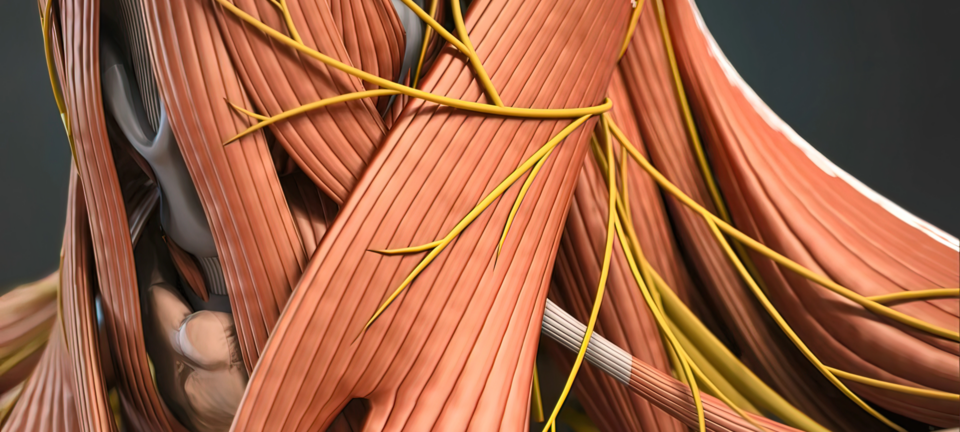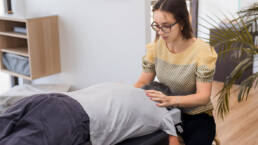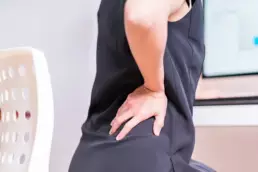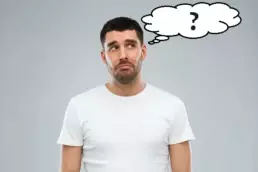Chiropractic adjustments and cervical Dystonia have a long history. Cervical Dystonia (spasmodic Torticollis) is a very painful condition that occurs when the muscles in the neck contract involuntarily. These spasms cause the head to twist or turn to one side and can pull forward or backward motion.
Cervical Dystonia is a rare condition that can occur at any age. When it occurs in children, it’s called Torticollis. Cervical Dystonia typically occurs in middle-aged people, women more often than men. The symptoms usually start gradually and progressively get worse.
Table of Contents
ToggleWhat are the Symptoms of Cervical Dystonia?
Cervical Dystonia causes your head to twist in a variety of directions because of the tightening muscles. The direction of the movement depends on the specific muscles contracting.
The most common type of twisting resulting from cervical Dystonia is when muscle spasms pull your chin down and to the side, toward the shoulder. The rate of the spasms can vary, being slow and intermittent to somewhat faster and more frequent. The variations can cause different combinations of abnormal head motion. If the spasms are more frequent, they can appear to be almost a “jerking” motion.
Many patients with cervical Dystonia will also experience neck pain and stiffness that radiates into the shoulders. Some patients with cervical Dystonia also experience sub-occipital headaches. For many patients, the pain and discomfort from cervical Dystonia can be quite disabling.
 What Causes Cervical Dystonia?
What Causes Cervical Dystonia?
The causes of cervical Dystonia are often unknown. Some patients have a family history of this painful disorder. Some patients have a specific gene mutation linked to cervical Dystonia. Head, neck, or shoulder injuries are possible causes of cervical Dystonia.
What are the Risk Factors of Cervical Dystonia?
Some of the risk factors for cervical Dystonia include:
- Age – Most patients are over the age of 30 but it can occur at any age.
- Sex – Cervical Dystonia occurs in women more often than in men.
- Family history – Most likely due to the genetic component, if a close family member has any type of Dystonia, you have a higher risk of developing the disorder as well.
Complications of Chiropractic Adjustments and Cervical Dystonia
In rare cases, the muscle spasms that occur with cervical Dystonia can appear in other muscle groups. The most common areas reported are the face, jaw, arms, and trunk.
Patients experiencing cervical Dystonia can also develop arthritis (bone spurs ) that reduces the amount of space in the spinal canal. These spurs, called osteophytes, can result in numbness, tingling, or weakness in the arms, legs, hands, and feet.
The safety of Chiropractic adjustment is well-studied and documented. Chiropractic care is much safer than many medical procedures, including prescription medications and of course surgeries.
What is the Medical Treatment for Cervical Dystonia?
A case study published in the Journal of Upper Cervical Chiropractic Research documented a case of chiropractic adjustments of the cervical spine that provided significant relief from neck pain and the spasms associated with cervical Dystonia.
Cervical Dystonia is also called spasmodic Torticollis. The Mayo Clinic describes this condition on its website: “… a painful condition in which your neck muscles contract involuntarily, causing your head to twist or turn to one side. Cervical Dystonia can also cause your head to tilt forward or backward uncontrollably.”
Cervical Dystonia can resolve without treatment but prolonged episodes can occur without proper treatment. The most common medical treatment is to inject botulinum toxin (Botox) into the affected muscles. This temporarily paralyzes the muscles, preventing them from contracting. Surgery can be suggested but is a very severe treatment.
Chiropractic Adjustments And Cervical Dystonia: How Does a Chiropractor Help?
There are many different treatment options for cervical Dystonia. Still, a well-documented treatment is Chiropractic adjustments, and cervical dystonia as an effective and minimally invasive is chiropractic care. Chiropractic specializes in treating conditions affecting the spine and nervous systems. Of course, these are the two areas primarily affected by cervical Dystonia.
Chiropractic has a long and successful history of treating cervical Dystonia’s more common cousin Torticollis. The chiropractic adjustment will mobilize areas of the cervical spine that are stuck or “subluxated,” which helps reduce muscle spasms, restore joint function, relieve inflammation of the spinal joints, and, most importantly, remove interference from the spinal nerves that send information from the brain to all of the tissues in the body. Fortunately, the doctors at Integrative Health and Rehabilitation have many tools to use in addition to Chiropractic adjustments and cervical Dystonia, including Acupuncture, Dry Needling, Laser therapy, Electroacupuncture, and more.
Interested in Chiropractic Adjustments and Cervical Dystonia?
If you are experiencing cervical Dystonia or neck pain from a whiplash injury, back pain, or headaches, schedule an appointment with one of our chiropractors today! Our office is conveniently located for patients in Arvada, Denver, and Wheat Ridge, Colorado. Still not sure? Check out some of our 5-Star Google reviews and see what our happy, healthy, pain-free patients have to say.

Ready for an expert opinion? Get in touch today!
With a legacy of more than 25 years, our team specializes in helping individuals triumph over back pain, neck discomfort, and persistent headaches, all without relying on addictive medications or risky surgical procedures.






